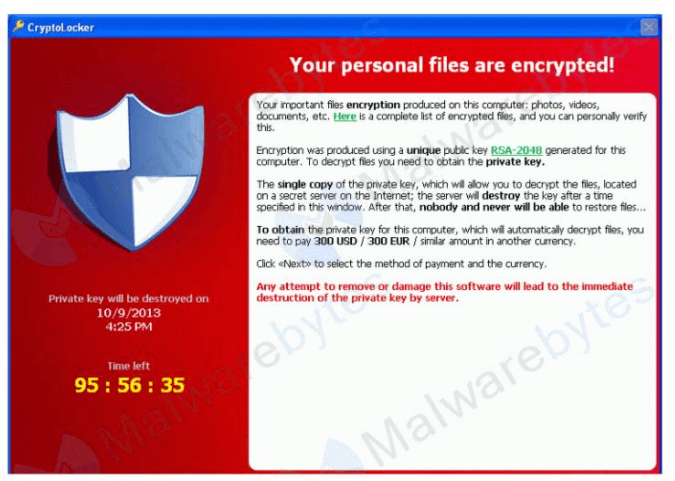

WannaCry is a “worm” because it automatically spreads itself around the network. First developed by the NSA, it was leaked by the hacking group, the Shadow Brokers. WannaCry spread through the EternalBlue exploit and DoublePulsar backdoor implant tool.ĮternalBlue exploited a vulnerability in the Server Message Block protocol for Microsoft systems.

This opens a binary file that downloads Locky onto the PC.Īside from the usual advice of “patch”, “update anti-virus and anti-spam” and “educate your users”, it reminds us of another fundamental lesson – “disable macros”. Once clicked, the malware uses social engineering, conning the user to enable macros. Like CryptoLocker, it arrived via a malicious email attachment (a Word doc with a macro Trojan). The developers of the ransomware then get a cut (normally 40%) of any takings.Ĭerber works without an internet connection – so even unplugging your PC can’t save you. You don’t need any technical skills to launch the attack. doc etc.Ĭerber is the best example of a sinister practice - ransomware as a service.ĭevelopers build the malware and sell the ‘kits’ on the dark web to would-be cybercriminals. Its most common method of infection was via email attachments – often in innocuous looking documents labelled. It searches your computer for files to encrypt – including on external hard drives and in the cloud.ĬryptoLocker infected over 500,000 machines for a ransom of $300 or €300. What is the history of ransomware, and how much damage has each strain caused?Īt the end, we list the 6 most effective ways to prevent a ransomware attack.ĬryptoLocker was spread by the Gameover ZeuS botnet. The fate of your business could depend on the integrity of cyber criminals. If you’re hit by ransomware, it can be bad news. However, there is no guarantee that individuals will recover their files if they pay the ransom.” Recovery can be a difficult process that may require the services of a reputable data recovery specialist, and some victims pay to recover their files. Anyone with important data stored on their computer or network is at risk, including government or law enforcement agencies and healthcare systems or other critical infrastructure entities. Ransomware can be devastating to an individual or an organisation. Ransomware typically spreads through phishing emails or by unknowingly visiting an infected website.

“a type of malicious software, or malware, designed to deny access to a computer system or data until a ransom is paid. The Cybersecurity and Infrastructure Security Agency (CISA) defines ransomware as… Cyber criminals can now demand payments that are untraceable. Ransomware has exploded due to the rise in cryptocurrencies. The private and public sectors have lost millions –not just to cyber criminals, but also in fixing the wreckage after. We’ve seen it wreak havoc on some of the biggest companies in the world. It feels like ransomware has been around for forever.


 0 kommentar(er)
0 kommentar(er)
